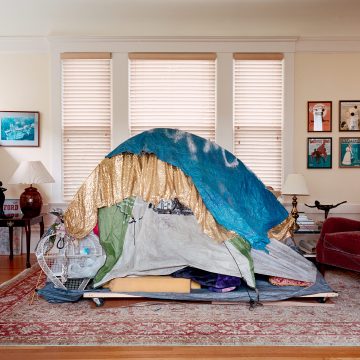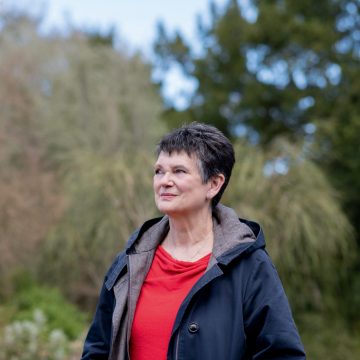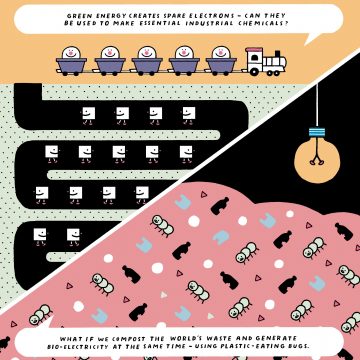Urban revolution
Want to go green? Move to the city. There are lots of great reasons why urbanites have a lower carbon footprint, and Cambridge is behind many of them.
The Intergovernmental Panel on Climate Change has declared Code Red for humanity. Human inhabitants of the Earth are right to fervently hope we reach net zero very soon. But what then? We can’t go back. Urban life is better for the environment – city dwellers use fewer resources overall. But building carbon-neutral cities will require immense change, and demands that we draw on the latest cutting-edge research.
Timber
Wood has been used as a construction material since humans began building – but a new engineered wood could enable us to create safe, solid, timber skyscrapers, says Professor Michael Ramage, who leads the University’s Centre for Natural Material Innovation. “Cross laminated timber (CLT) is the first significant construction material since reinforced concrete over a century ago. Past growth of cities has not been sympathetic to the environment – but future growth can be.”
We can move to a place where the materials we use to construct our buildings are grown, not mined
CLT consists of planks of sawn, glued and layered wood, with each layer at right angles to the previous one. “It’s like an enormous sheet of plywood,” says Ramage, “but the way it is constructed makes it structurally rigid and able to be used on a huge scale. It’s bigger and stronger than a tree.”
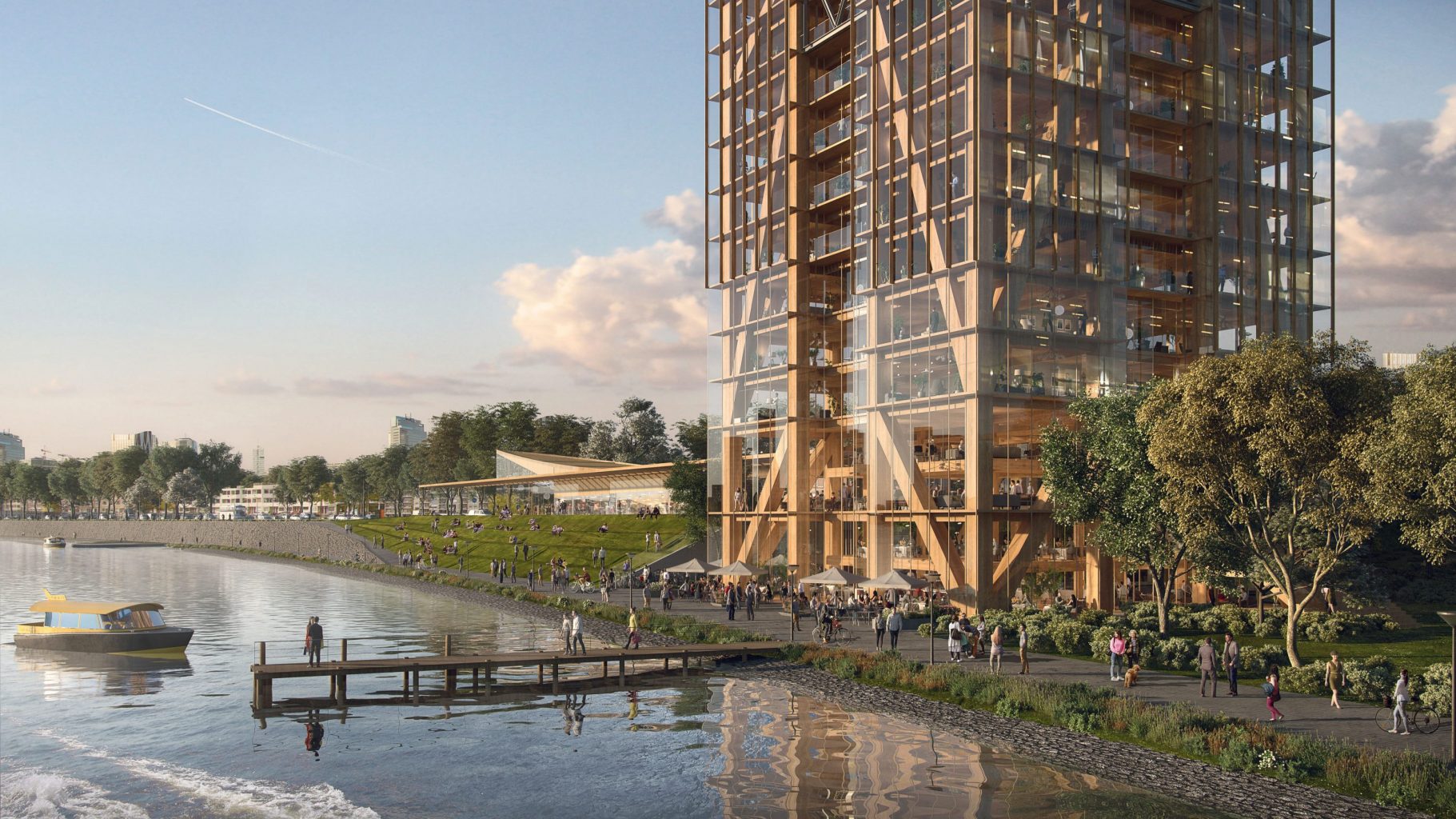
The Lodge, a proposal for a 125m-high riverside mixed-use timber tower in Rotterdam. PLP / Architecture, Centre for Natural Material Innovation, Smith and Wallwork Engineers
The Centre’s research projects include an experimental 300m timber skyscraper in the middle of London’s Barbican – dwarfing the world’s current tallest wooden building, standing at 85m in Bergen, Norway. “The first steel-framed skyscraper, the Home Insurance Building in Chicago, was built in 1885 and was also 85ft,” says Ramage. “Within 50 years we had the 381m Empire State Building. Using timber, and today’s chemistry, biochemistry, physics and mathematics, we can do that again.
“Sustainable trees are designed for trees to be planted as crops, to be cut down like wheat or hay – and for every one we cut, we plant more than two in its place,” says Ramage. “Sustainable forests in Europe have expanded by more than 10 per cent in the past 20 years. And every tonne of wood holds 1.8 tonnes of carbon dioxide – it’s a naturally excellent material for carbon sequestration. By any measure it’s better to build from timber rather than concrete or steel, in almost any circumstance. We can move to a place where the materials we use to construct our buildings are grown, not mined.”
Living buildings
The construction, heating, maintenance, and demolition of buildings make the greatest contribution to a city’s carbon footprint. But the science is already here to negate that environmental impact. “Geothermal energy is a fantastic green way to heat buildings,” says Abir Al-Tabbaa, Professor of Geotechnical Engineering. “People are aware of heat pumps, but if you’re going to pile into the soil anyway to build, why not include this heat extraction from the ground into your foundations? A few pipes and steel reinforcement and it’s there.”
If you have materials that can monitor their own health and repair themselves, then you won’t need to replace them
Doing this for individual buildings would be like having your own personal turbine on your roof, she says. Research is still ongoing into the effects of temperature changes on the foundations (“we obviously don’t want it to compromise the short-term or long-term integrity of the building”) but the science has huge potential for heating entire cities in the future. “There is the potential utopia of new cities being heated from one geothermal bore hole hundreds of metres into the earth.”
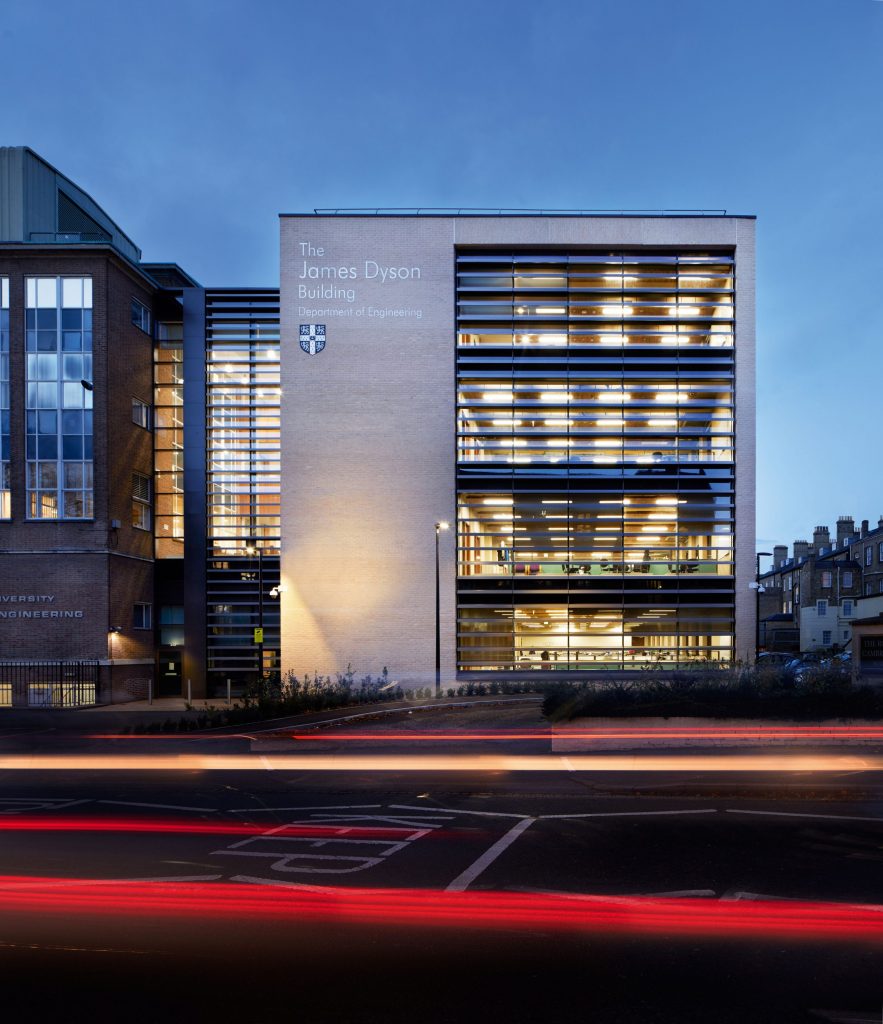
A large number of innovative, self-healing and low-carbon concrete blocks were used in the construction of the James Dyson Building. Photography: Alan Williams
It’s not just the heating of the buildings that can be greener. Al-Tabbaa’s team is developing green cement for concrete and other applications that can not only repair itself but also clean the air around it, and even sequestrate carbon (using carbon sorbents within the concrete). “Concrete buildings have a traditionally huge carbon footprint over their lifetime,” she says. “The problem is, the people who build them are not usually the same people who maintain them, so they don’t care about their carbon footprint years down the line. So, if you develop and use materials that can monitor their own health and repair themselves, and also tell the maintenance team which assets in the city are a priority, you won’t need to replace them. Eighty per cent of the infrastructure we will have in 2050 we already have now, so this isn’t so much about new buildings, it’s about looking after what we have in a low carbon and sustainable way.”
Data
“Infrastructure isn’t a series of individual projects,” says Dr Jennifer Schooling, Director of the Cambridge Centre for Smart Infrastructure and Construction (CSIC). “It’s a vital system of systems, the veins and bones of our places. Gathering, using and properly applying data cohesively can help our understanding of that infrastructure, leading to better design, construction and management practices.”
Efficiency is optimising a whole system, even if that means making one thing less efficient to enable other things to have a greater overall positive impact
Schooling says it’s about tying the data together to reduce the carbon output across every aspect of the urban space. “Data helps us contextualise things. Vehicles are transitioning from diesel to electric but that doesn’t mean they’re carbon neutral – they need to be made in a green way, so we need to ask if we can exist as we are, with everyone having their own car. You can talk about water systems going net zero, but it takes a lot of electricity to purify it. And we need to manage the construction of roads, railways, energy and water systems better, so we can understand how we can use fewer resources, what condition these systems are in, what maintenance they need – and how we can do this in a low-carbon way.”
And data is everywhere. “From satellite data and sensors to mobile phone and even social media data (to help understand how the infrastructure is used), there is so much available.” And the CSIC extols the idea of designers using a ‘digital twin’, a digital version of a physical infrastructure or built environment that uses data from the physical structure to model future scenarios and solutions.
“Efficiency is about reducing uncertainty,” says Schooling. “It’s also about being able to optimise a whole system, even if that means making one thing less efficient to enable other things to have a greater overall positive impact. If you work only in a particular bubble you can’t do that. But proper, data crossover and collaboration can help us do this.”
Water management
“Urban water planning has traditionally involved controlling rainfall where it falls,” says Professor Richard Fenner, “collecting it in ever bigger pipes and moving it away. But where is away? It still has to go somewhere, which then causes problems to a community further downstream. It’s more sensible to deal with it at source.”
The best way to do that, say Fenner and his colleagues at the Centre for Sustainable Development, is to infiltrate that water back into the ground through innovative sustainable drainage systems. “It’s about recreating predevelopment hydrology – using vegetated surfaces, turning things back to how the area would have responded before we built anything there.”
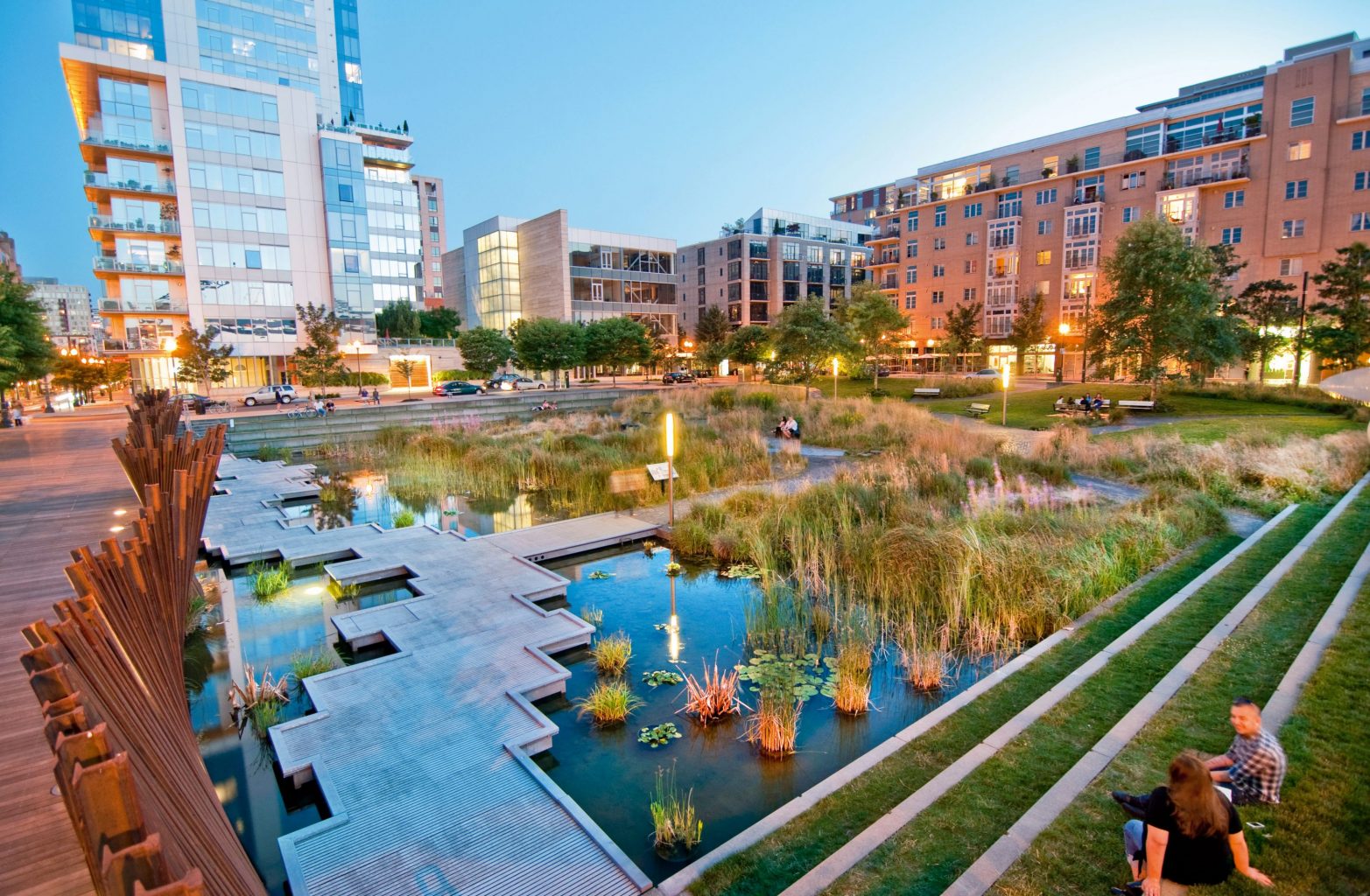
Formerly an area of rail yards and industry, Tanner Springs is fed by stormwater and now forms a refuge for wildlife in the heart of the city. Photography: Ramboll Studio Dreiseitl
The water is infiltrated in natural surface depressions such as ponds and wetlands, which doesn’t just manage flood resilience naturally, it brings numerous other benefits. “You’re improving habitat and adding diversity. Vegetation can sequester carbon, mitigate and attenuate noise from, say, roads, provide amenity and recreation opportunity along green corridors which can improve health, and broad leaf plants can trap air pollutants and clean up the air.”
But what about urban areas where water might not naturally infiltrate the ground? “People tend to treat urban and rural drainage separately but we need to join the dots,” says Fenner. “It’s not necessarily about infiltrating the water in the city but managing the amount of water that gets there.”
Now, says Fenner, it’s about getting across the positive message of the benefits. “People think these systems are strange and new and we don’t understand them and they might not work. But not only do they work – and not only is it the ‘right’ thing to do – but all these enormous wide-ranging benefits improve our livability, our health and our quality of life. Why wouldn’t we embrace them?”
Retrofitting
Research by Dr Ruchi Choudhary, leader of the multi-disciplinary Energy Efficient Cities Initiative, has helped create tools that simulate multi-period energy retrofits and promote spatial energy optimisation.
Demolition is not efficient or desirable for many reasons, so the challenge is how we upgrade, how we refit
“We all share resources in a city, from services, to mobility, to static infrastructure,” says Choudhary, a reader in Architectural Engineering. “They are energy intense, but more efficient per capita. However, the problem with European cities in particular is their ageing. What do we do? Demolition is not efficient or desirable for many reasons, so the challenge is how we upgrade, how we refit.
“Ten years ago, we picked the low-hanging fruit, initiatives such as LED lighting that would pay for themselves in their own lifetime. But the bigger issues are those that don’t pay for themselves in their lifetime. A decade ago, we’d be recommending condensing boilers as good enough, now it’s about fuel switching, which is much more costly but needs to be done now.”
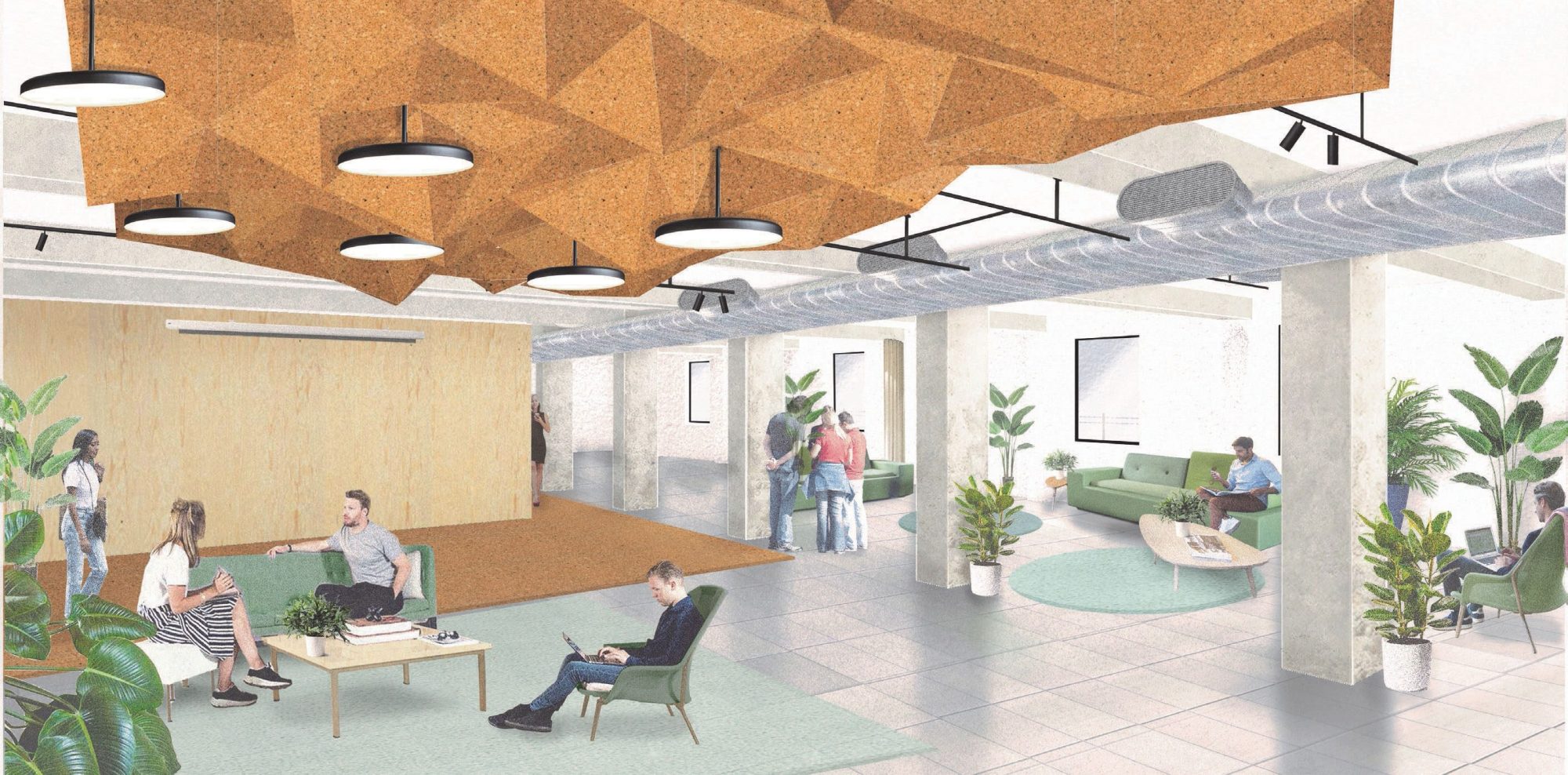
This 1930s telephone exchange will be a world-first for a retrofitted sustainable office building, and is projected to result in an 80 per cent saving in whole life carbon emissions (more than 10,000kg CO2e/m2) compared to a standard office refurbishment. Artists Impression: Architype
In many city buildings it’s unclear who is responsible for retrofitting, she says. “You might have offices, residential flats and retail operations all in the same building – one shell with multiple different interests,” says Choudhary. “Government needs to resolve this. In the short term it’s about not wasting energy, but in the longer term we need to leverage our growing renewables, but you need proper policies and incentives to make fuel switching economically feasible.”
And you may also need local, tailor-made policies. This, says Choudhary, is where research benefits the change. “Every area is different, whether it’s spatially or the typology of houses,” she says. “They won’t all benefit equally at the same time, so we need to push for more research – and more acceptance of the research. We need to take the longer-term approach to research that extends far beyond our lifetime, and have the resources to do it.”

